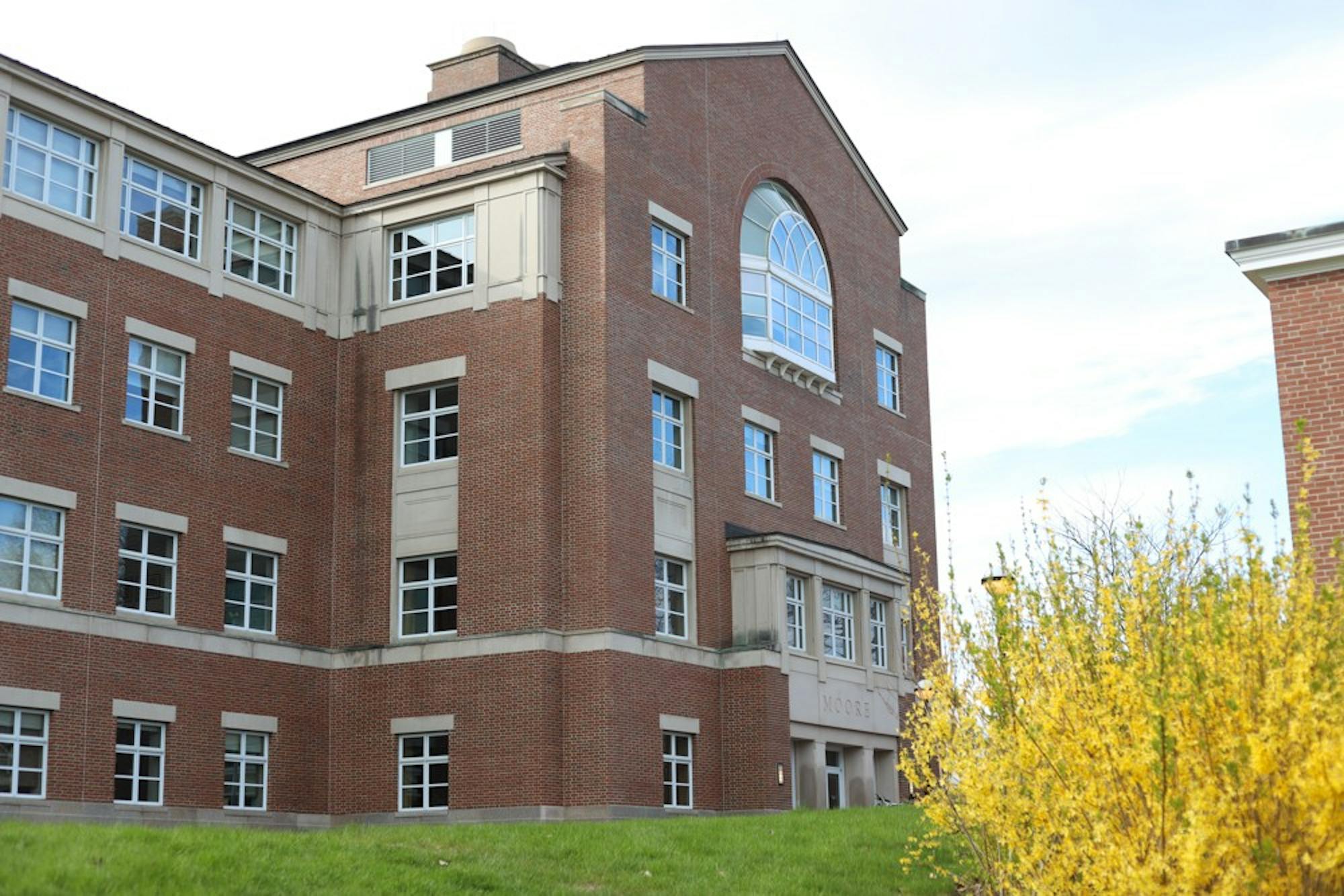On Wednesday, the Dartmouth Political Union hosted philosopher Peter Boghossian for an interactive event on free speech and social justice. Approximately 25 students attended the event and were led through Boghossian’s program built around critical thinking and reasoning abilities, according to his personal website.
According to DPU vice president Vlado Vojdanovski ’22, Boghossian’s team contacted the DPU with an “innovative idea” in which students could match their position on an issue with a specific position around the room, defending their beliefs on a variety of issues and attempting to better understand each other.
According to Vojdanovski, Boghossian — author of the book “How to Have Impossible Conversations” — has experience in finding common ground and talking to people on relevant issues. Boghossian specializes in critical thinking and moral reasoning, according to his personal website, which also informs Boghossian’s work in prisons, hospitals and schools, where he teaches how to think through seemingly “intractable problems.”
“As the DPU, we really aim to create a space where students can feel comfortable to speak on different topics, so it felt like a good opportunity to do so,” Vojdanovski said.
At the start of the event, Boghossian directed what he termed “an exercise of how to build consensus.” The audience voted on a set of eight “contentious statements” to determine the direction of the discussion. The audience then narrowed the list down to four statements: “The only remedy to past discrimination is present discrimination,” “the consideration of race should be removed from the college admissions process,” “‘my body my choice’ should be consistent for vaccines and abortions” and “speech is violence.”
Boghossian arranged seven lines of tape on the floor, each labeled with a level of agreement — strongly disagree, disagree, slightly disagree, neutral, slightly agree, agree and strongly agree. For each of the statements, volunteers began on the same line and moved to the line that they felt represented their stance on each topic.
“Ideally you should be able to understand both people who agree with you or disagree with you, especially if they’re your friends,” Vojdanovski said. “To the degree that this provoked understanding, I think [the DPU is] very supportive and happy about that.”
Scarlette Flores ’24 said she was interested in the contentious statements Boghossian posed and curious to see how the group might reach a consensus.
“I thought that it was interesting how he wanted to involve the audience a lot, which,” Flores said. “It [felt] like we had a stake and that we did get to a consensus.”
Boghossian then prompted a discussion with the volunteers, asking them why they chose their stance for the issue in question, what would cause them to move to a different line and whether they understood the viewpoints of other volunteers. Boghossian said this exercise was intended to “help people understand another position — not agree — but understand” and “to help people calibrate their own beliefs more accurately.”
Mac Reiferson ’22, treasurer of the DPU, said that he participated in the discussion surrounding the topic of race in the college admissions process.
“When you’re on the line, it forces you to really think about things,” Reiferson said. “Your argument has to be at least self-contained in its own logical bubble. That’s kind of the way you’re forced to think about things.”
Jordan Narrol ’25 said he had criticisms about the “speech is violence” discussion, although he was initially placed in a different group. Narrol said that some participants in the “speech is violence” discussion only interpreted the prompt at the surface level without diving into the “nuance” of the issue. He also criticized that Boghossian’s framework was more sympathetic to conservative stances.
“[The activity was actually about] framing the discussion around specific issues that make conservatives look better,” Narrol said.
Vojdanovski took a different stance on the event, recognizing that while Boghossian had his own opinions on the discussions at hand, “he did a decent job at … not letting any of his biases come through” Vojdanovski said.
Boghossian explained that the exercise was an effort to combat the current polarized climate in which people with different standpoints don’t talk with one another.
“I think the different things that we’re disagreeing over, we just need to start talking to each other more,” Boghossian said. ”But I think that … young people in college just don’t have the tools because they don’t see it modeled for them.”
Reiferson said that implementing Boghossian’s method is a useful way to structure a conversation and make it more productive.
“It showed us [that] this is a really great way of putting all your cards on the table,” Reiferson said. “Once you do that at the start, I think the conversation becomes even more effective because you can see what exactly you need to say to move someone.”
For Vojdanovski, the event was an attempt in showing how people can understand one another without agreeing.
“I hope that people found it to be relatively civil, and I hope that it was a learning opportunity for everyone, even if they strongly disagreed with everything that anyone said on the stage,” Vojdanovski said.




